Abstract
1. A detailed theory of cerebellar cortex is proposed whose consequence is that the cerebellum learns to perform motor skills. Two forms of input—output relation are described, both consistent with the cortical theory. One is suitable for learning movements (actions), and the other for learning to maintain posture and balance (maintenance reflexes).
2. It is known that the cells of the inferior olive and the cerebellar Purkinje cells have a special one-to-one relationship induced by the climbing fibre input. For learning actions, it is assumed that:
(a) each olivary cell responds to a cerebral instruction for an elemental movement. Any action has a defining representation in terms of elemental movements, and this representation has a neural expression as a sequence of firing patterns in the inferior olive; and
(b) in the correct state of the nervous system, a Purkinje cell can initiate the elemental movement to which its corresponding olivary cell responds.
3. Whenever an olivary cell fires, it sends an impulse (via the climbing fibre input) to its corresponding Purkinje cell. This Purkinje cell is also exposed (via the mossy fibre input) to information about the context in which its olivary cell fired; and it is shown how, during rehearsal of an action, each Purkinje cell can learn to recognize such contexts. Later, when the action has been learnt, occurrence of the context alone is enough to fire the Purkinje cell, which then causes the next elemental movement. The action thus progresses as it did during rehearsal.
4. It is shown that an interpretation of cerebellar cortex as a structure which allows each Purkinje cell to learn a number of contexts is consistent both with the distributions of the various types of cell, and with their known excitatory or inhibitory natures. It is demonstrated that the mossy fibre-granule cell arrangement provides the required pattern discrimination capability.
5. The following predictions are made.
(a) The synapses from parallel fibres to Purkinje cells are facilitated by the conjunction of presynaptic and climbing fibre (or post-synaptic) activity.
(b) No other cerebellar synapses are modifiable.
(c) Golgi cells are driven by the greater of the inputs from their upper and lower dendritic fields.
6. For learning maintenance reflexes, 2(a) and 2(b) are replaced by
2′. Each olivary cell is stimulated by one or more receptors, all of whose activities are usually reduced by the results of stimulating the corresponding Purkinje cell.
7. It is shown that if (2′) is satisfied, the circuit receptor → olivary cell → Purkinje cell → effector may be regarded as a stabilizing reflex circuit which is activated by learned mossy fibre inputs. This type of reflex has been called a learned conditional reflex, and it is shown how such reflexes can solve problems of maintaining posture and balance.
8. 5(a), and either (2) or (2′) are essential to the theory: 5(b) and 5(c) are not absolutely essential, and parts of the theory could survive the disproof of either.
Full text
PDF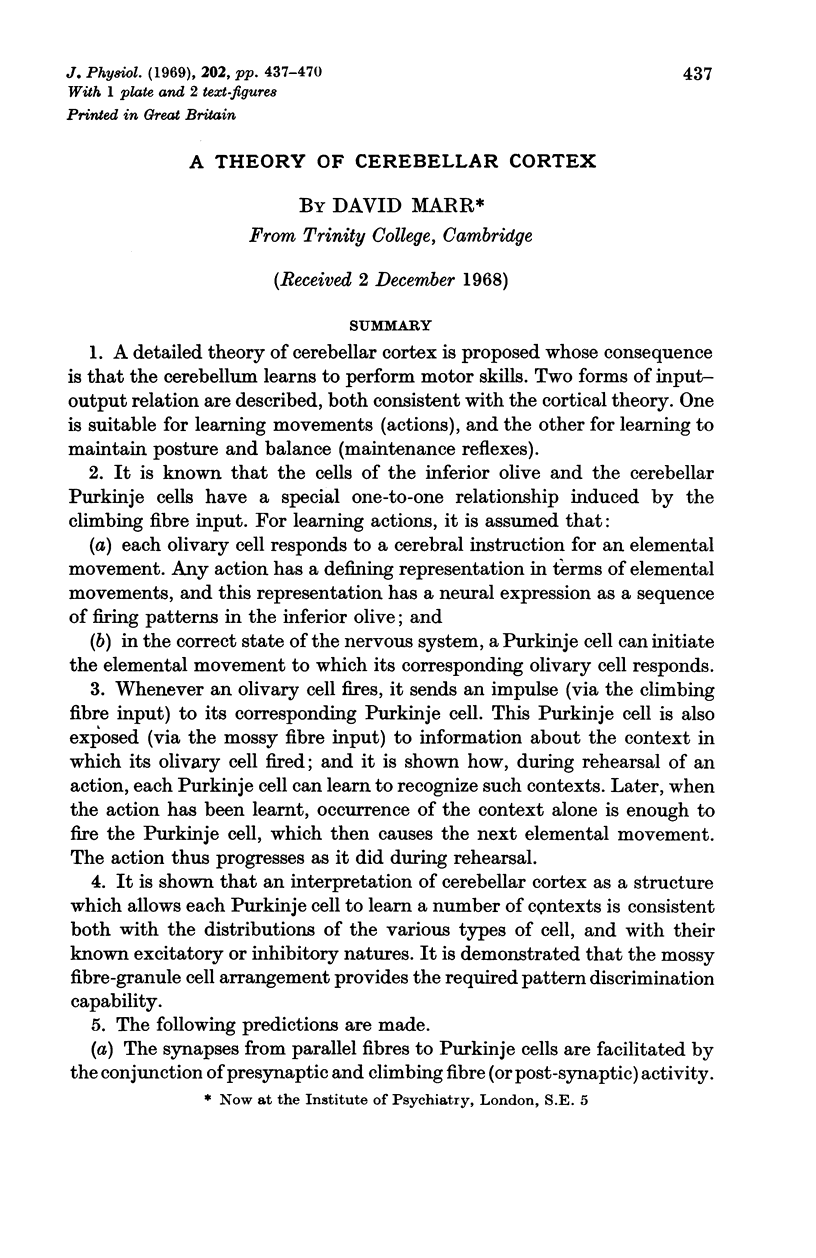
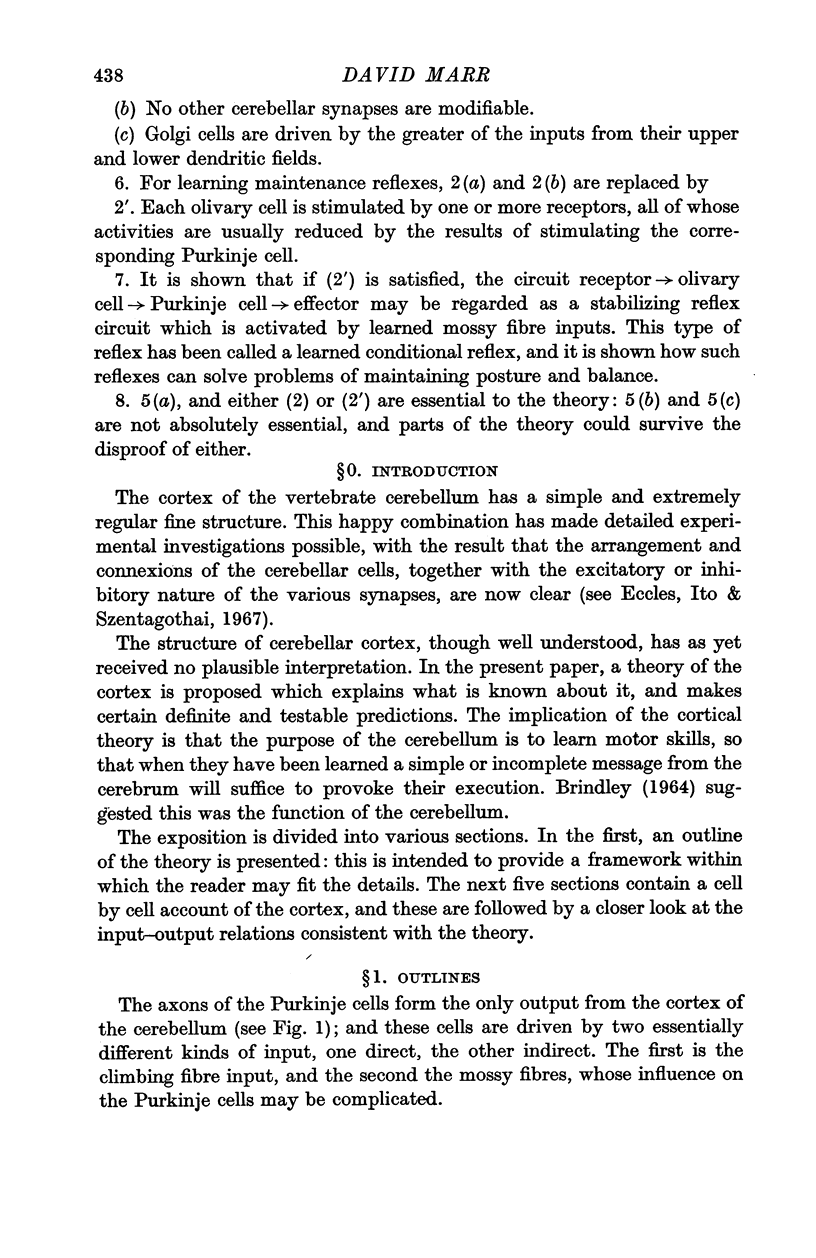
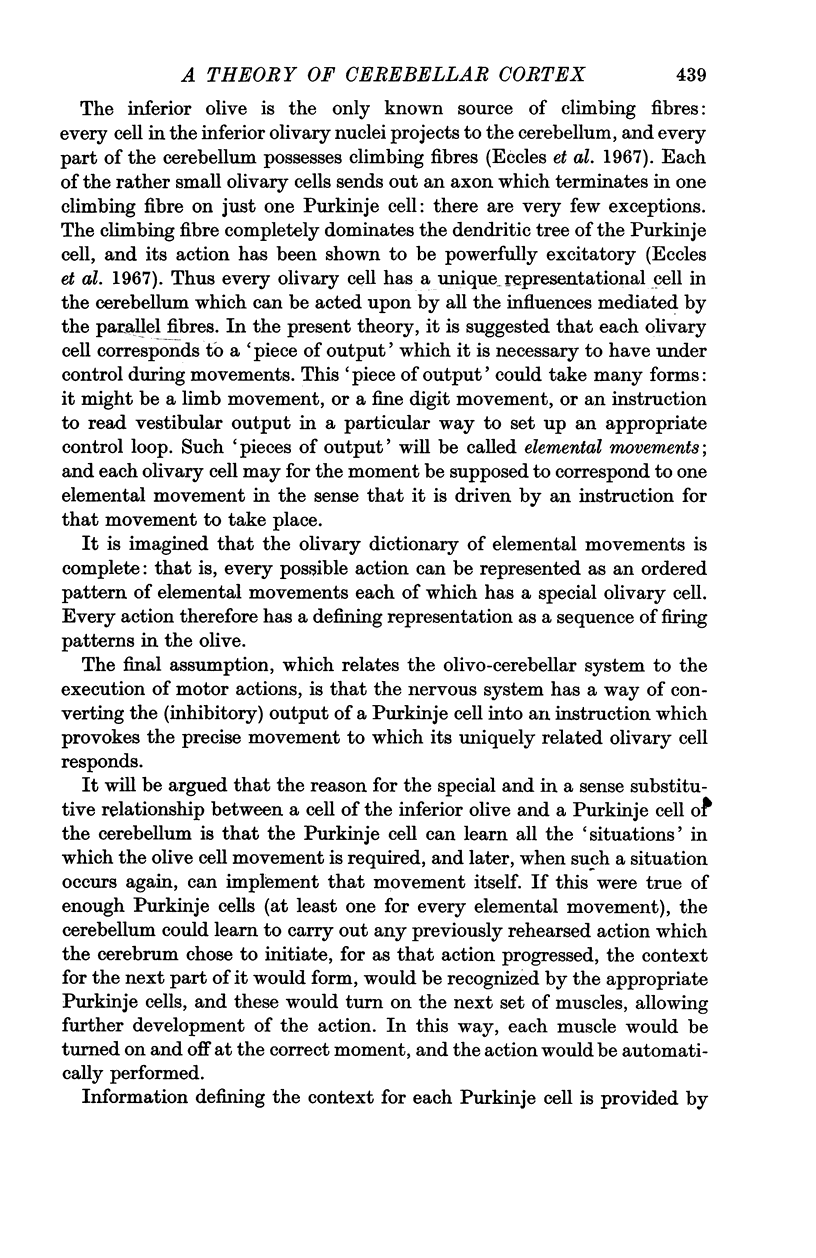

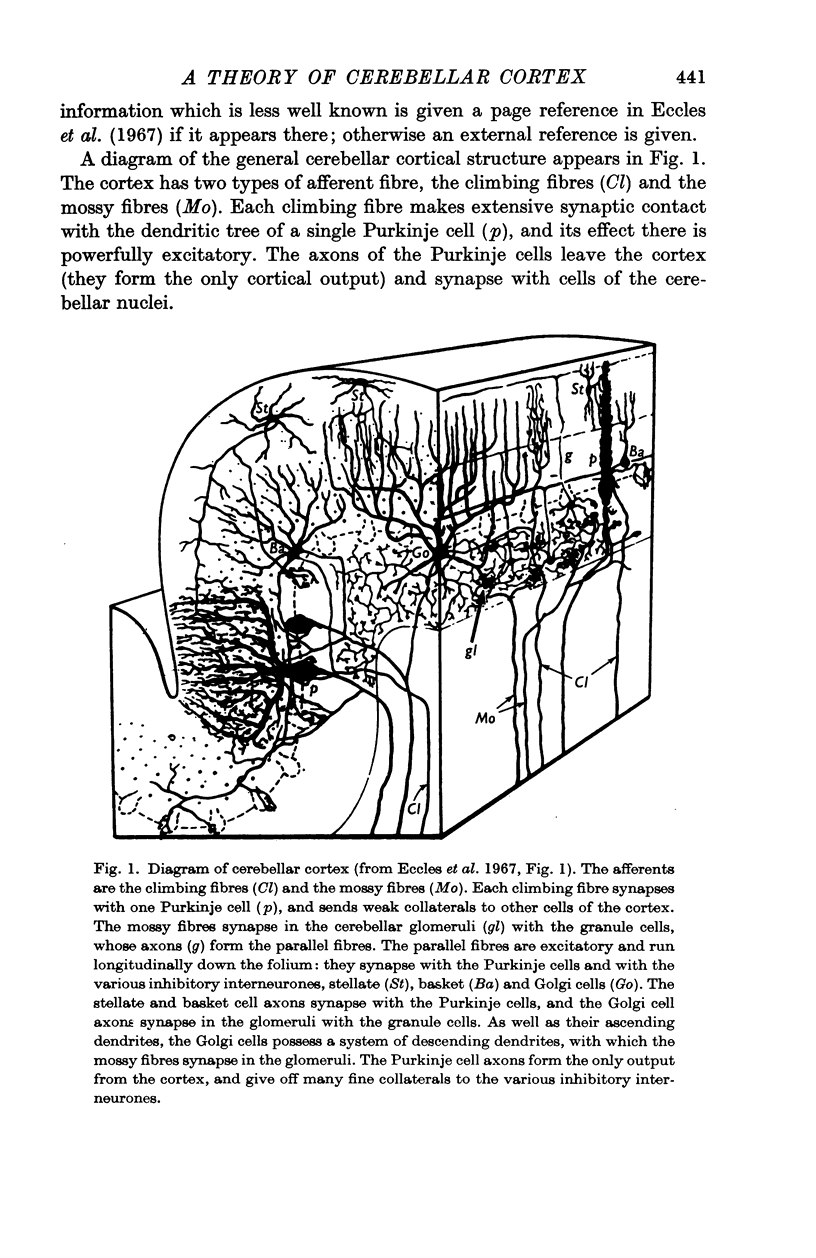
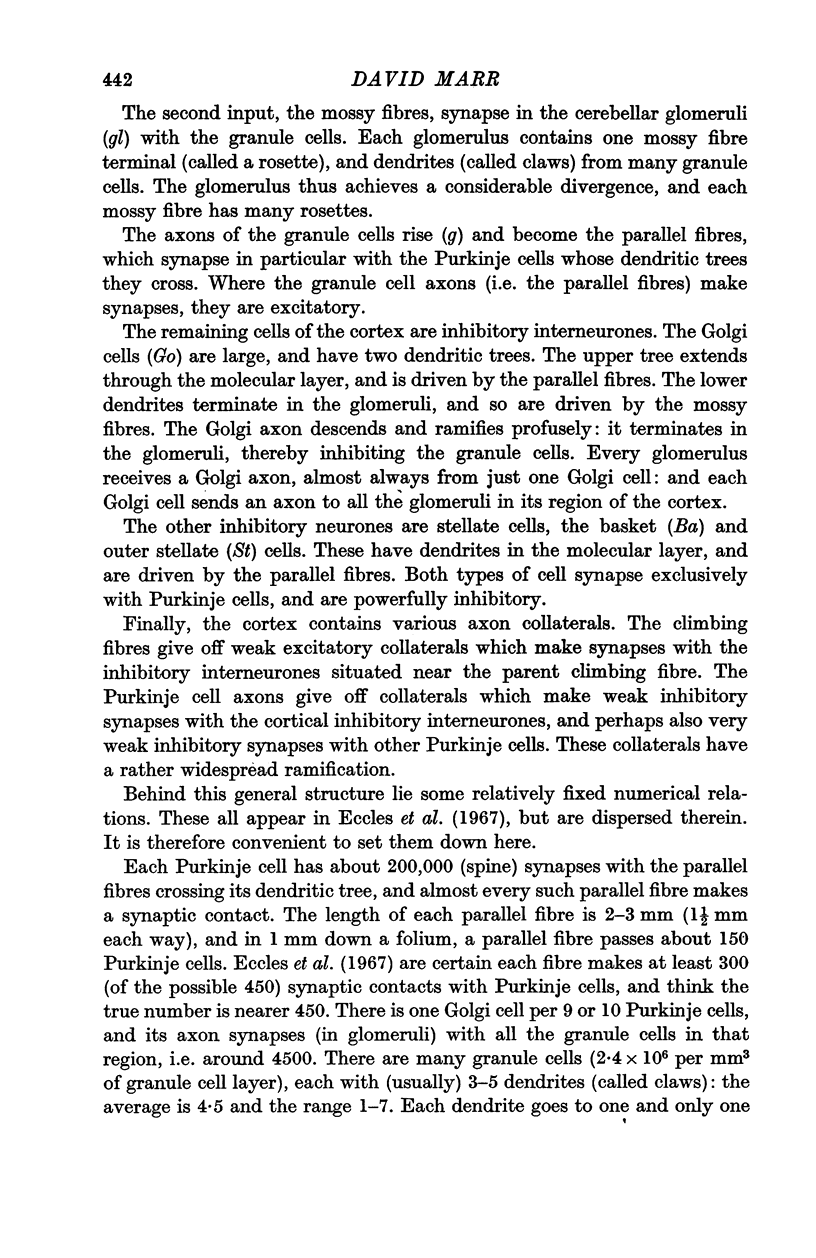
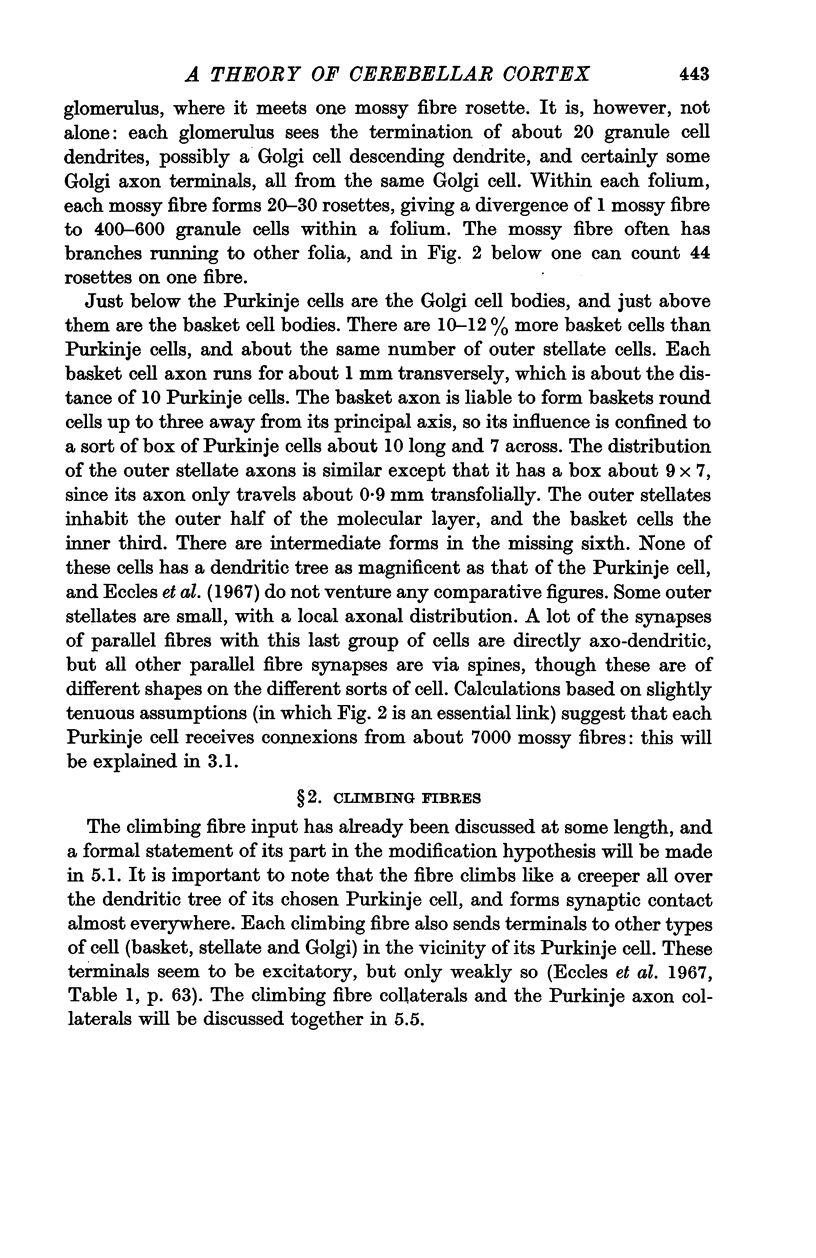
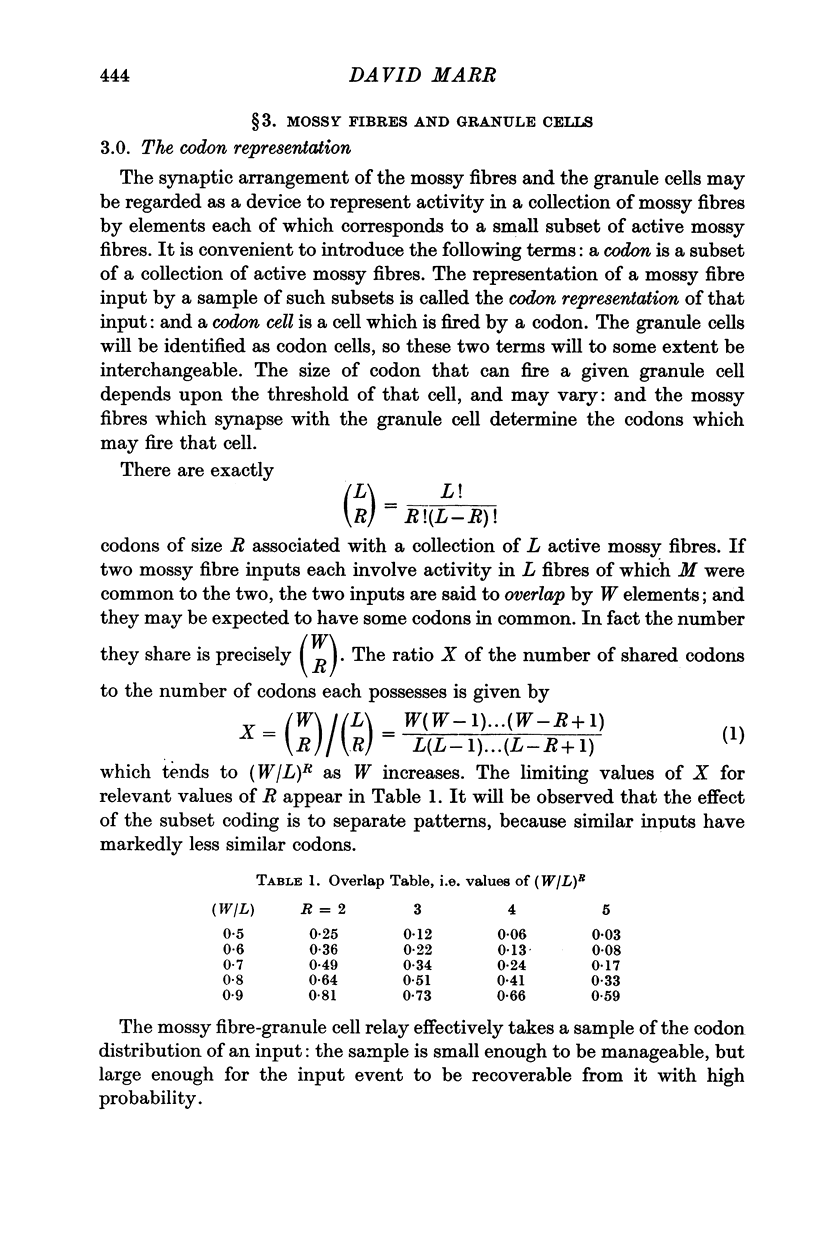
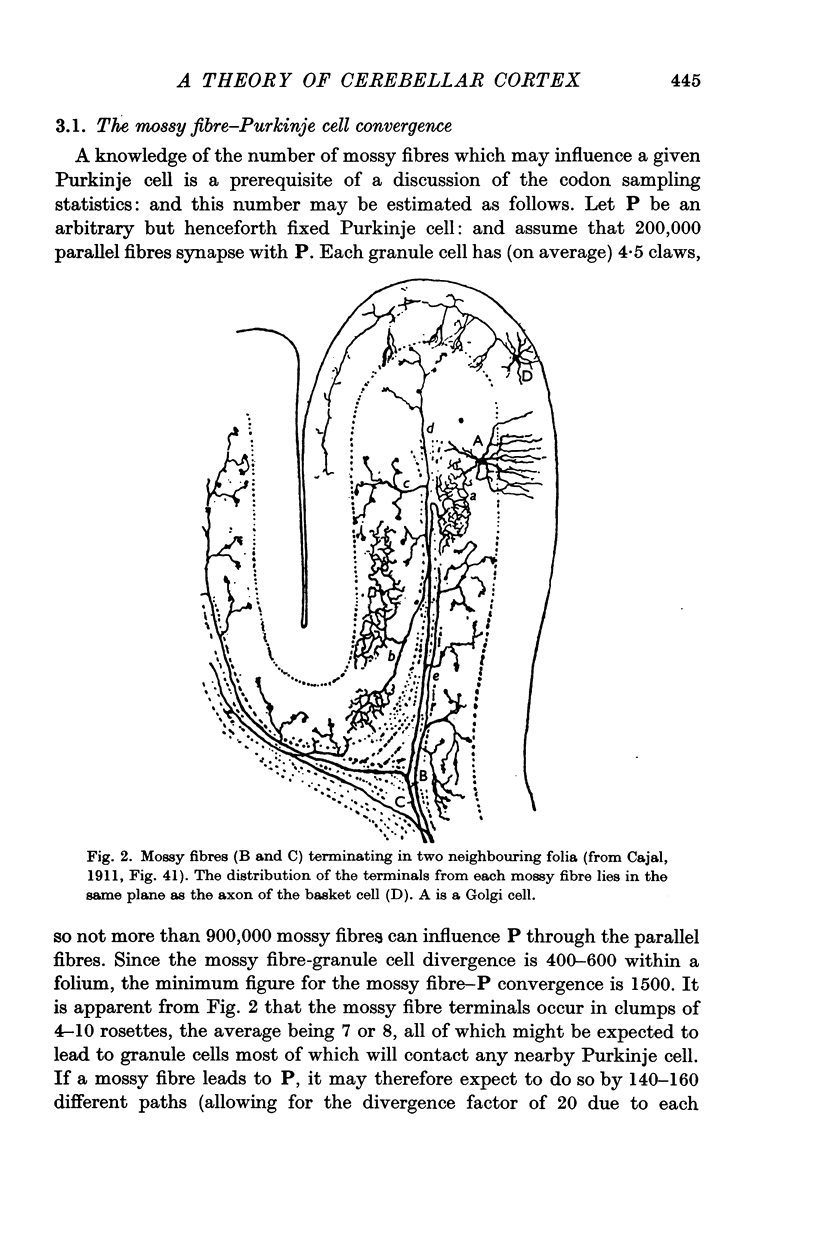
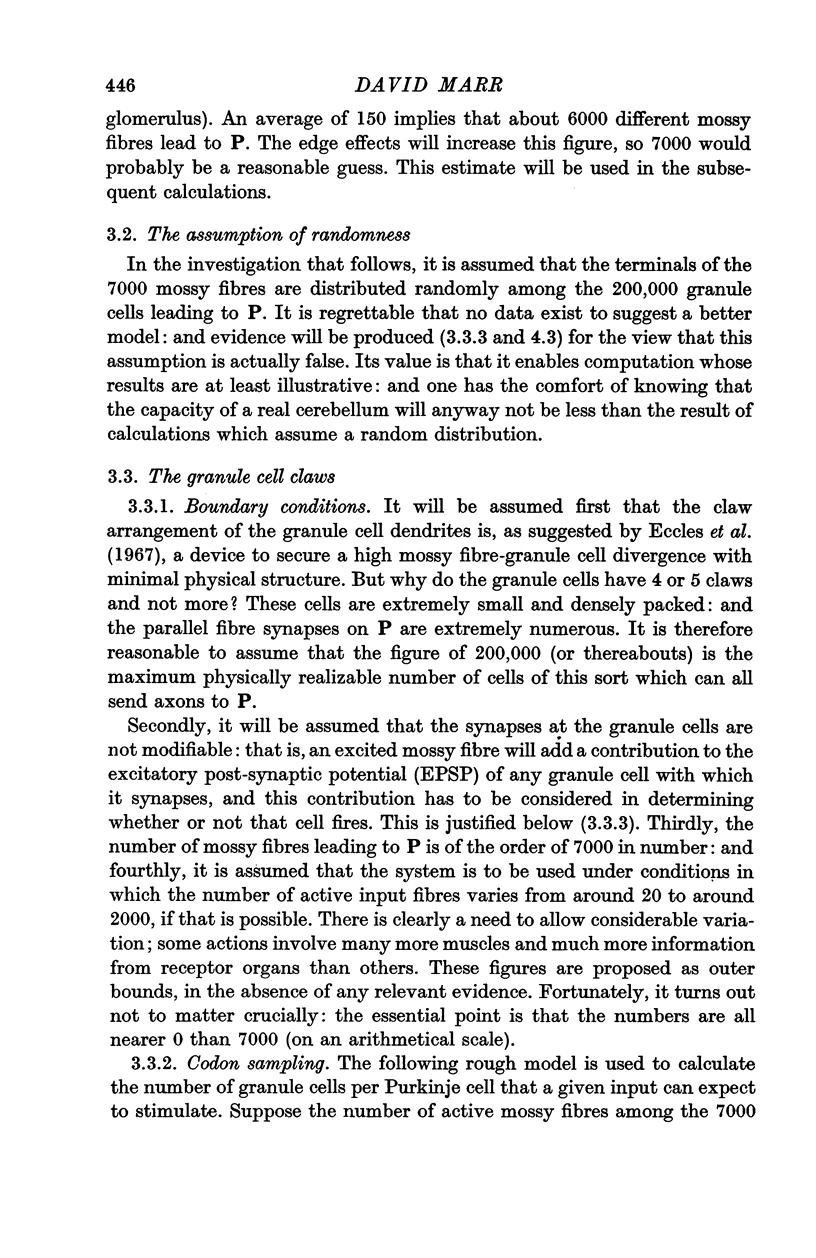
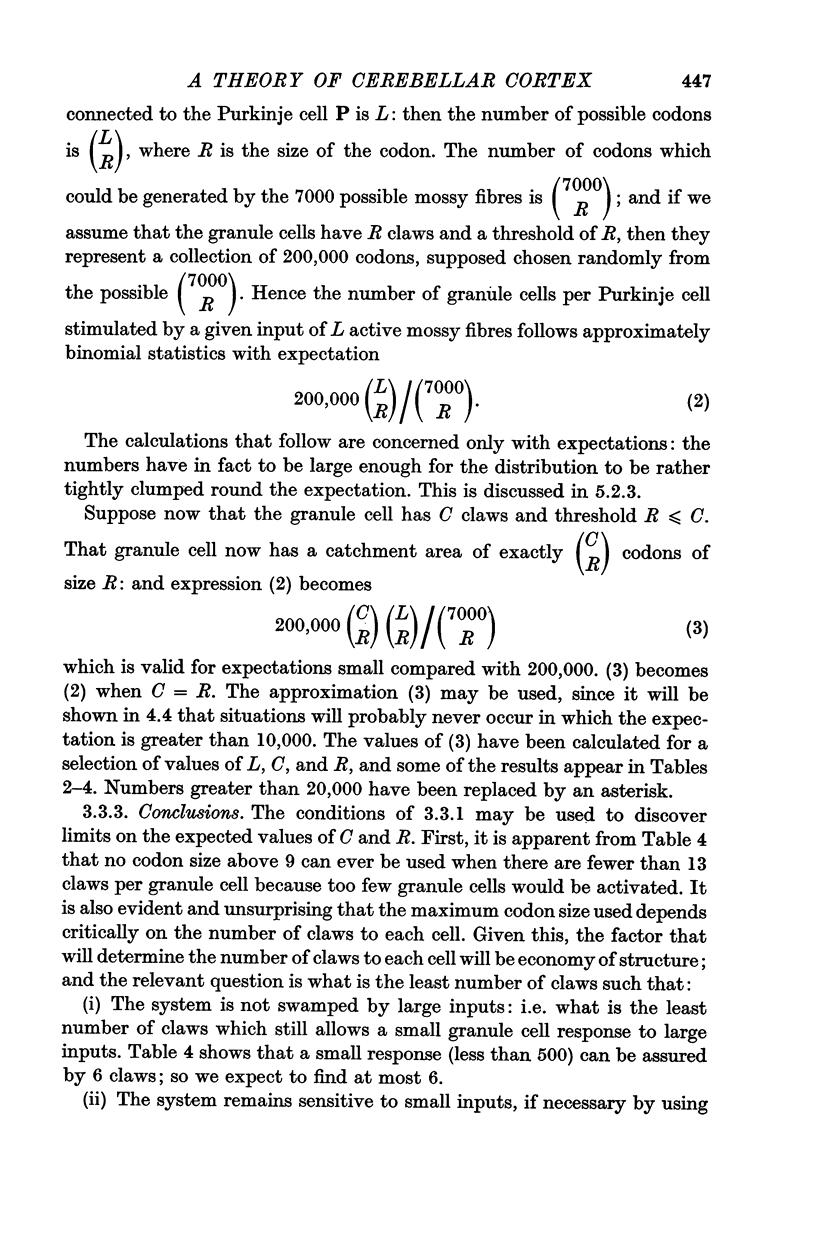
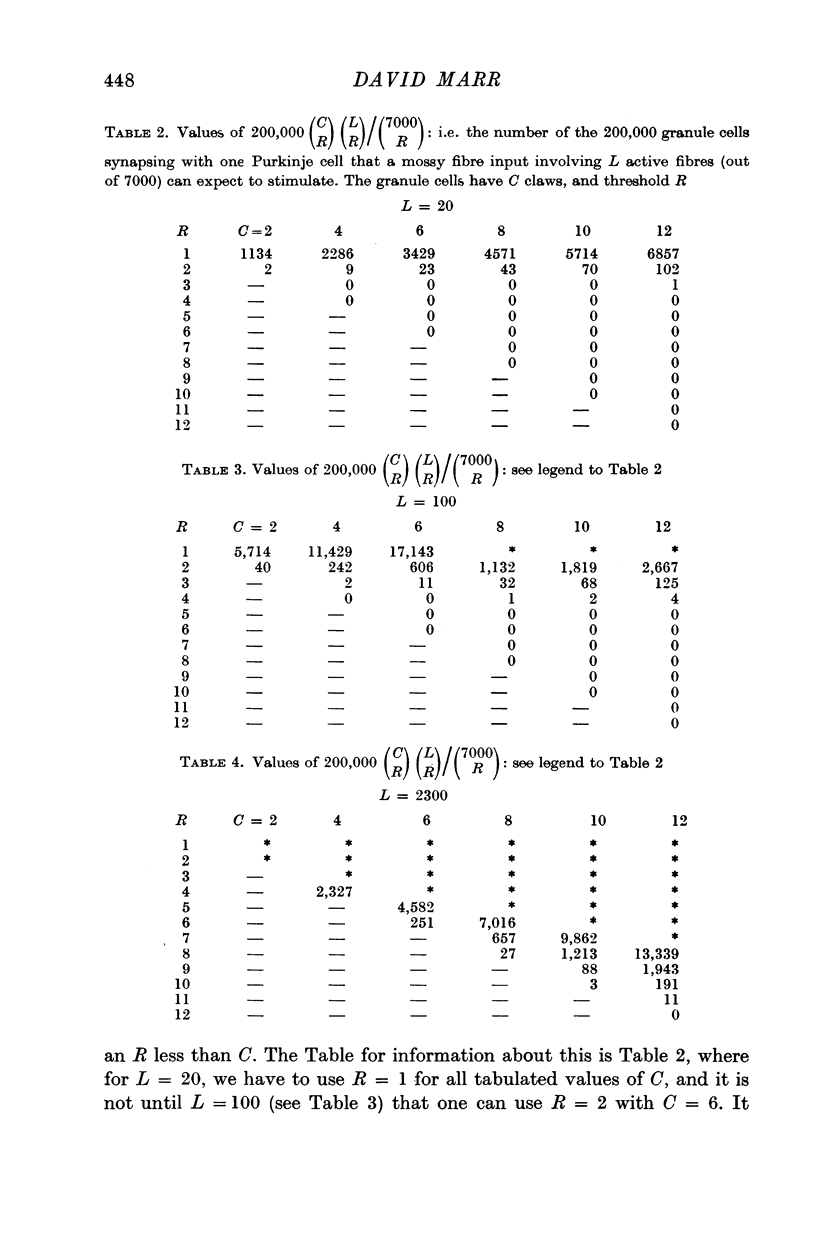
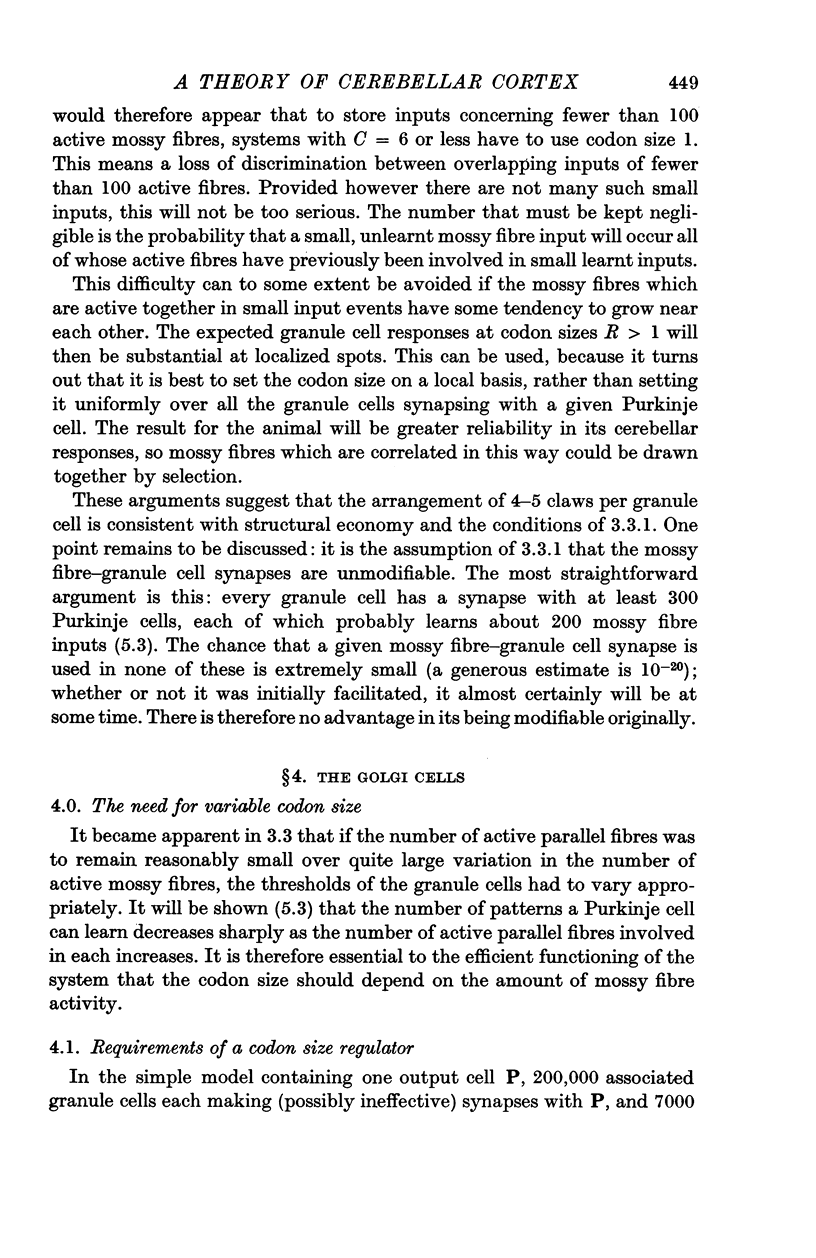
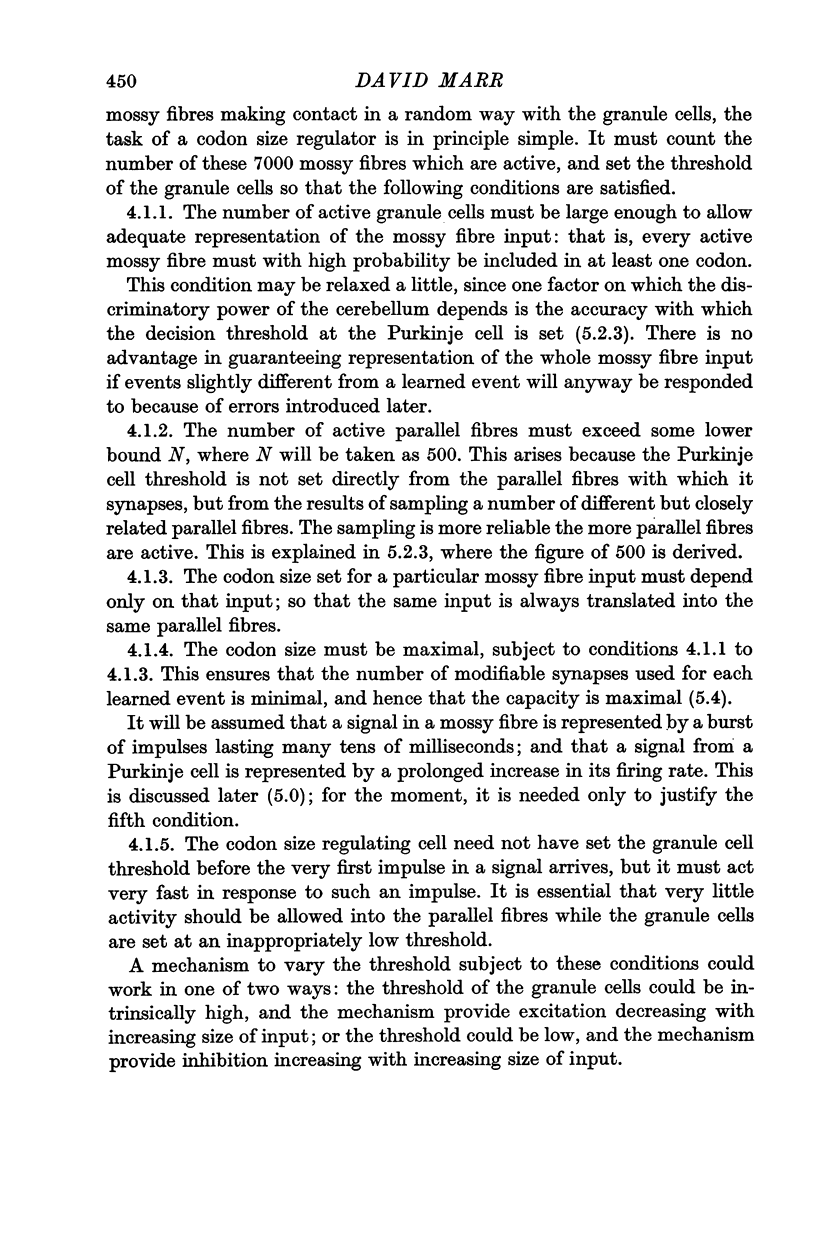
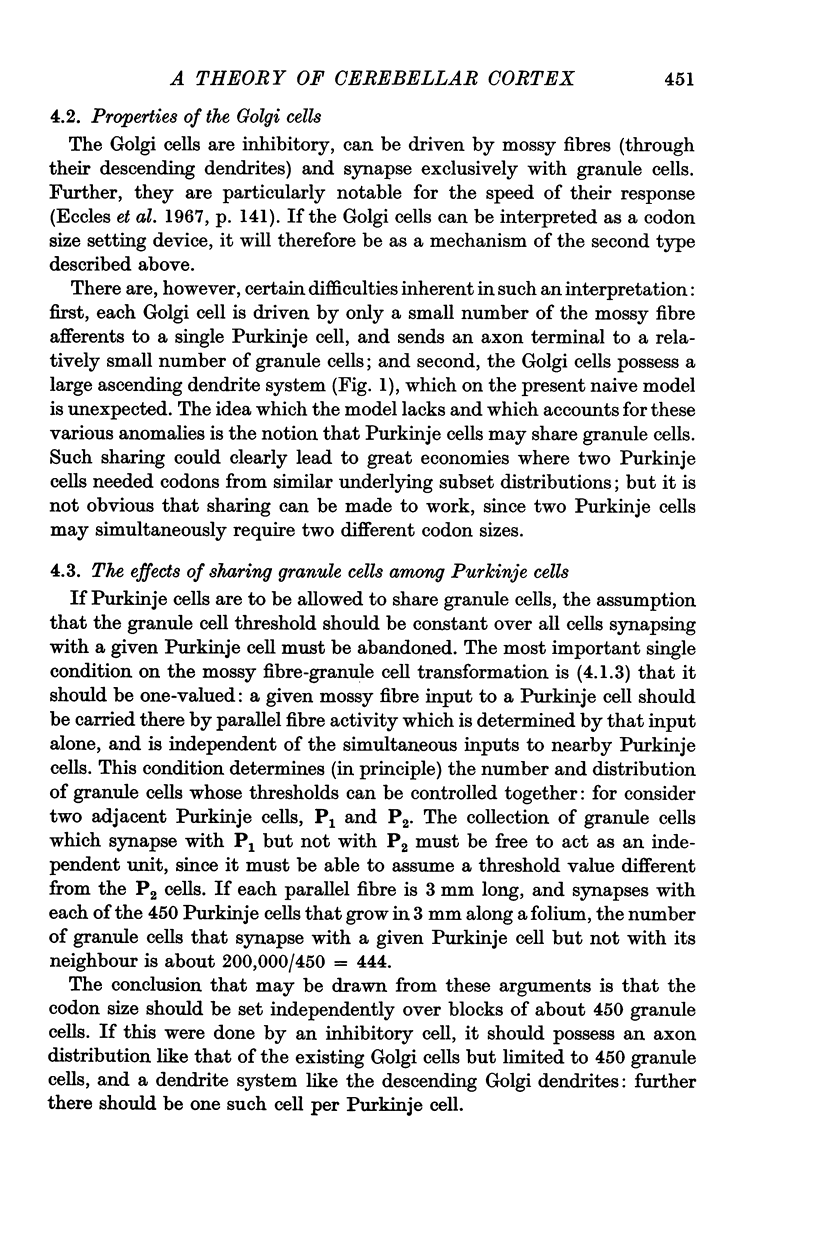
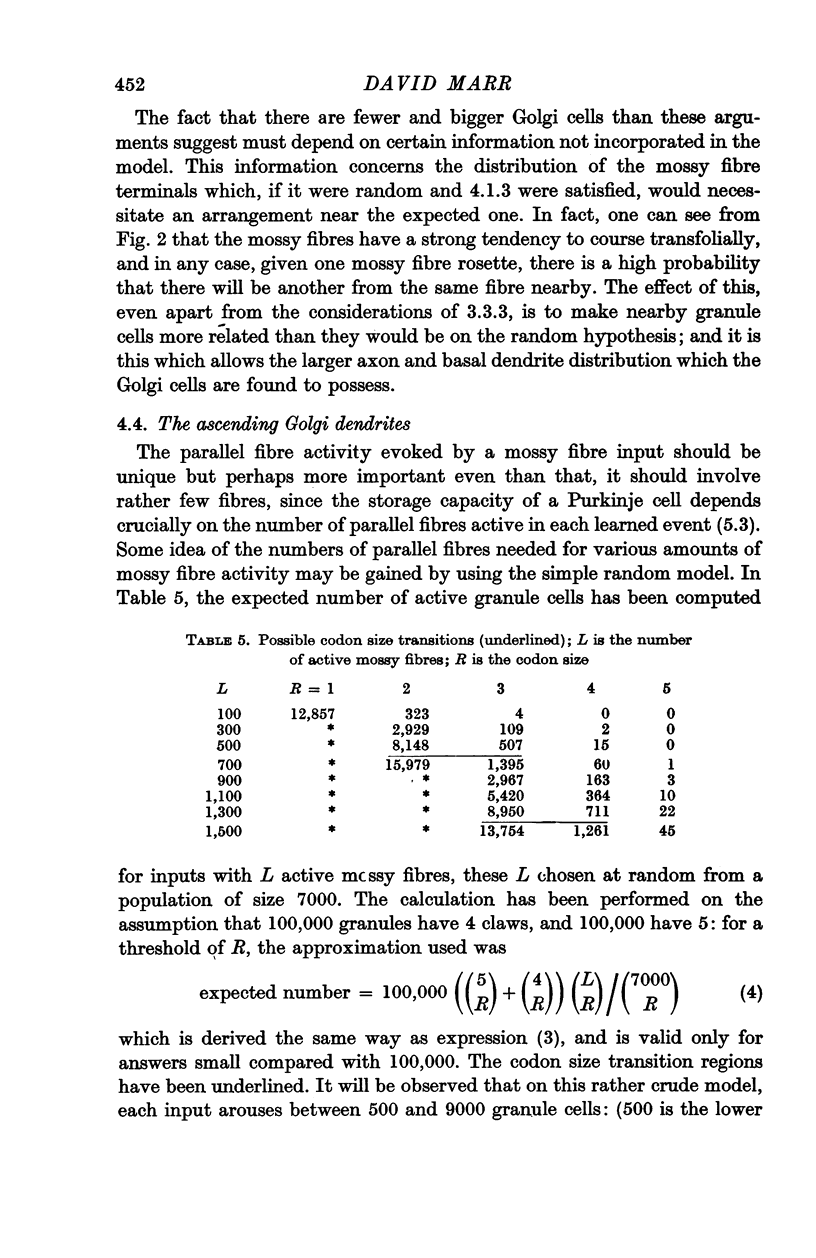
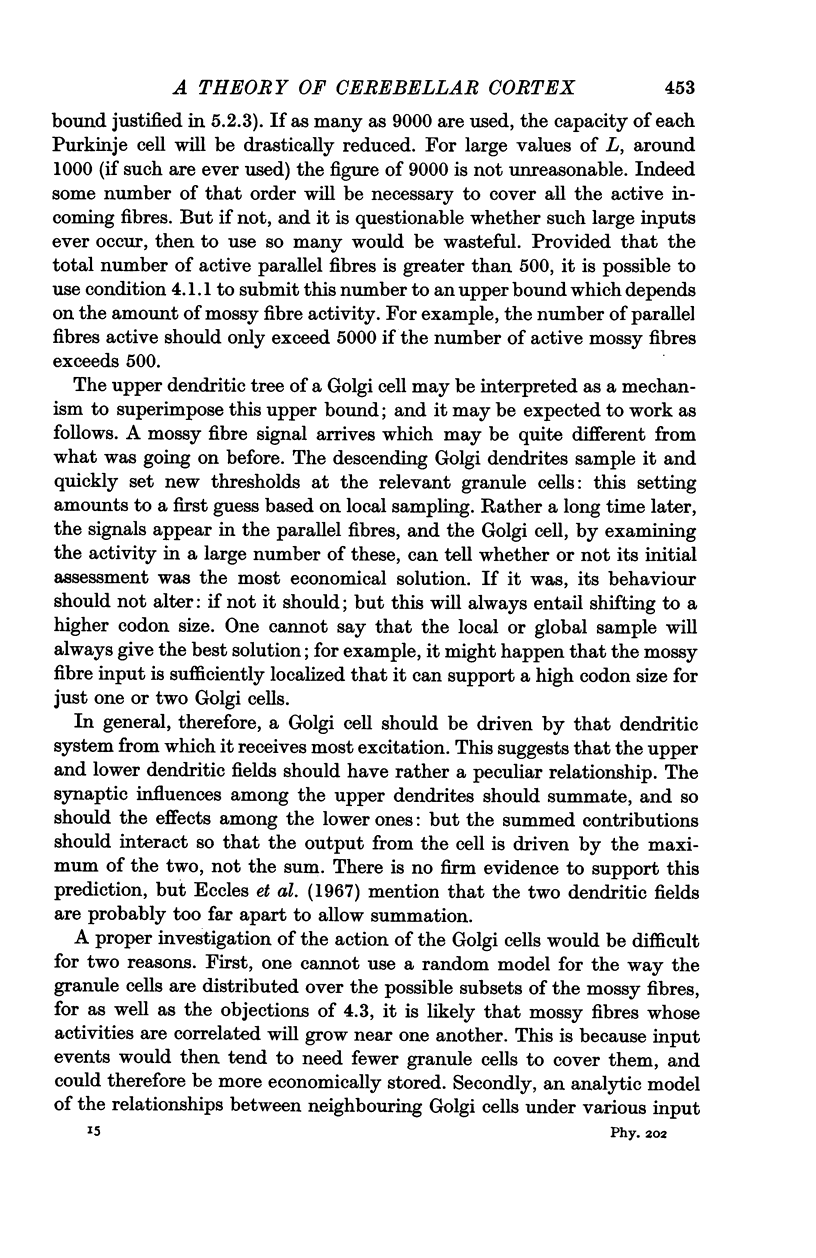
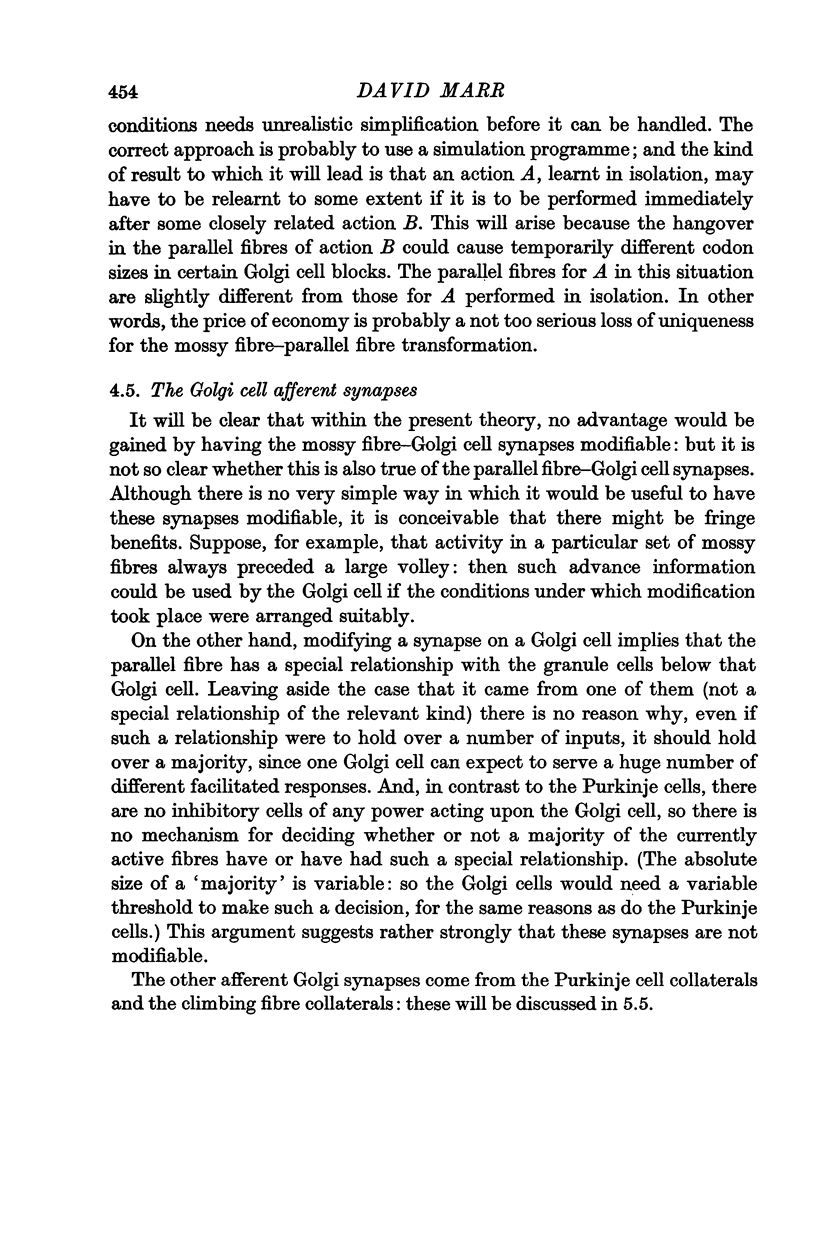
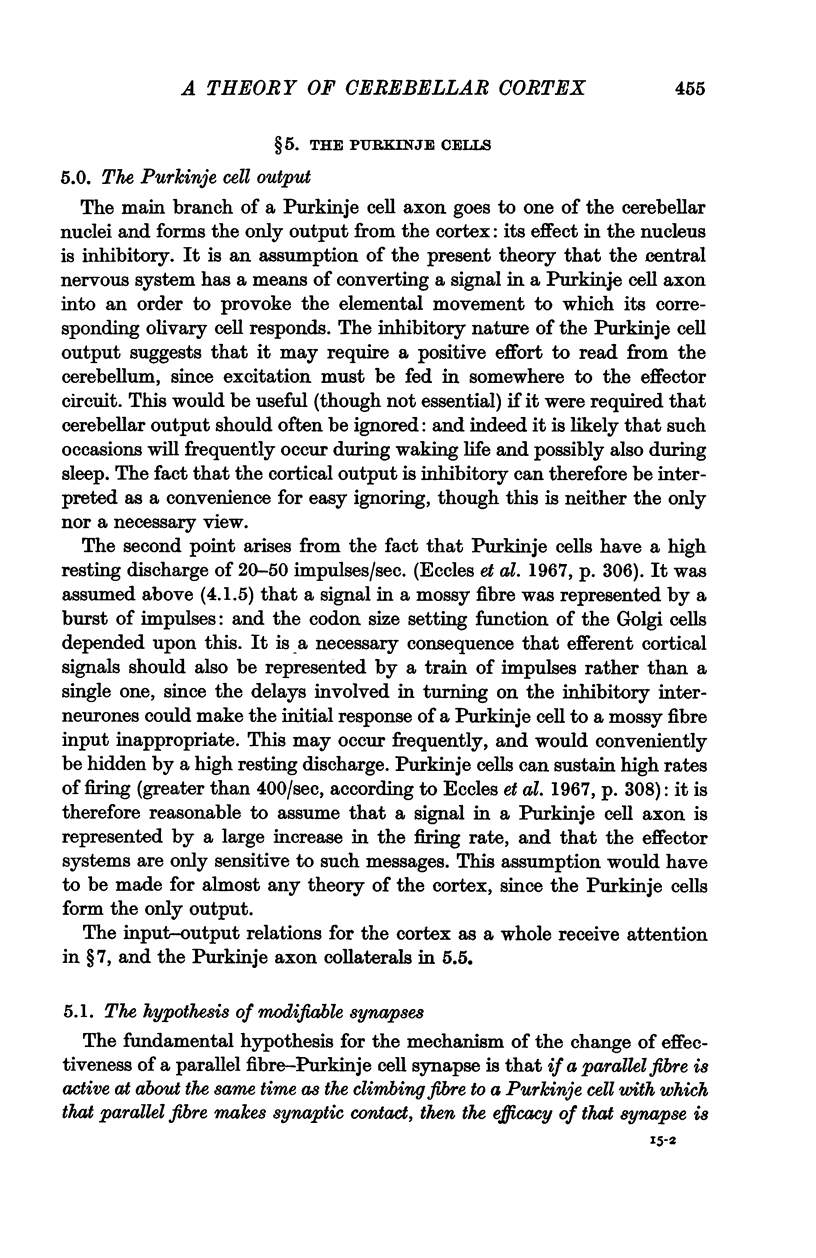
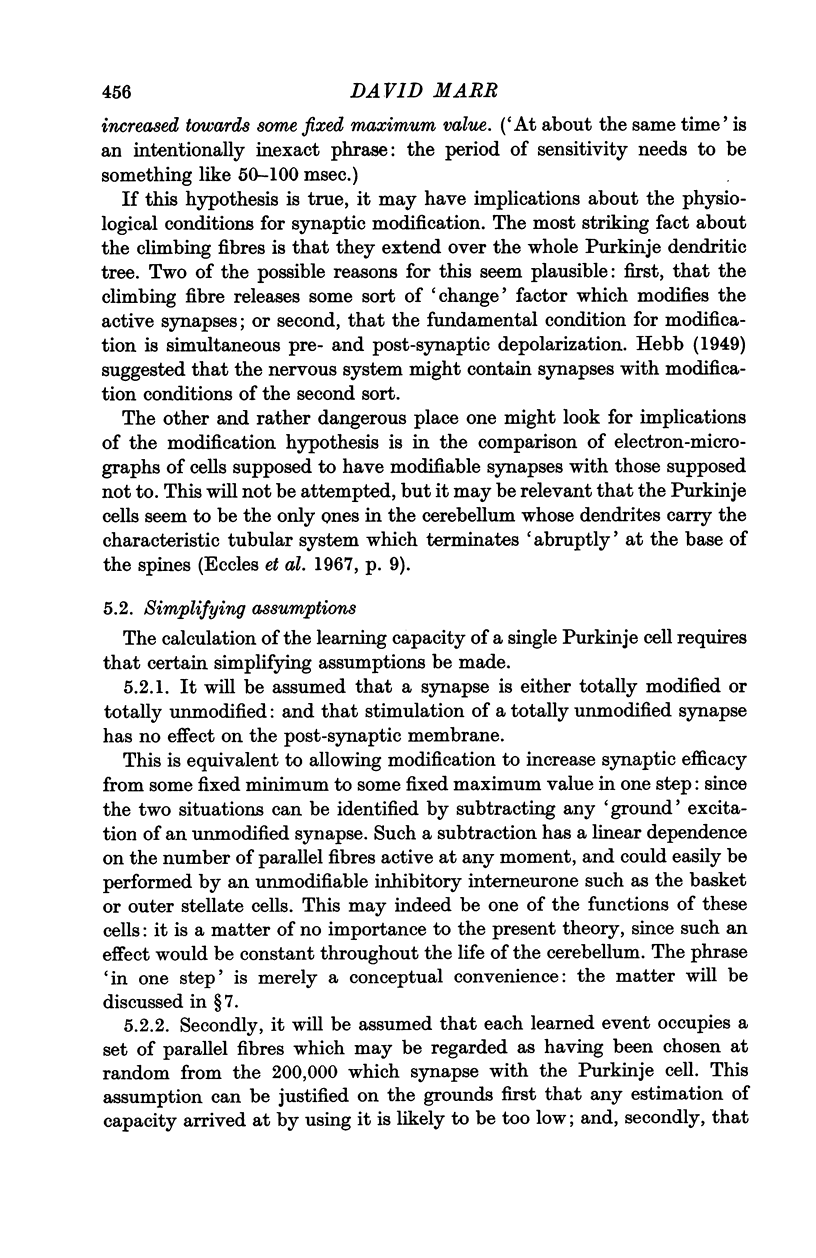
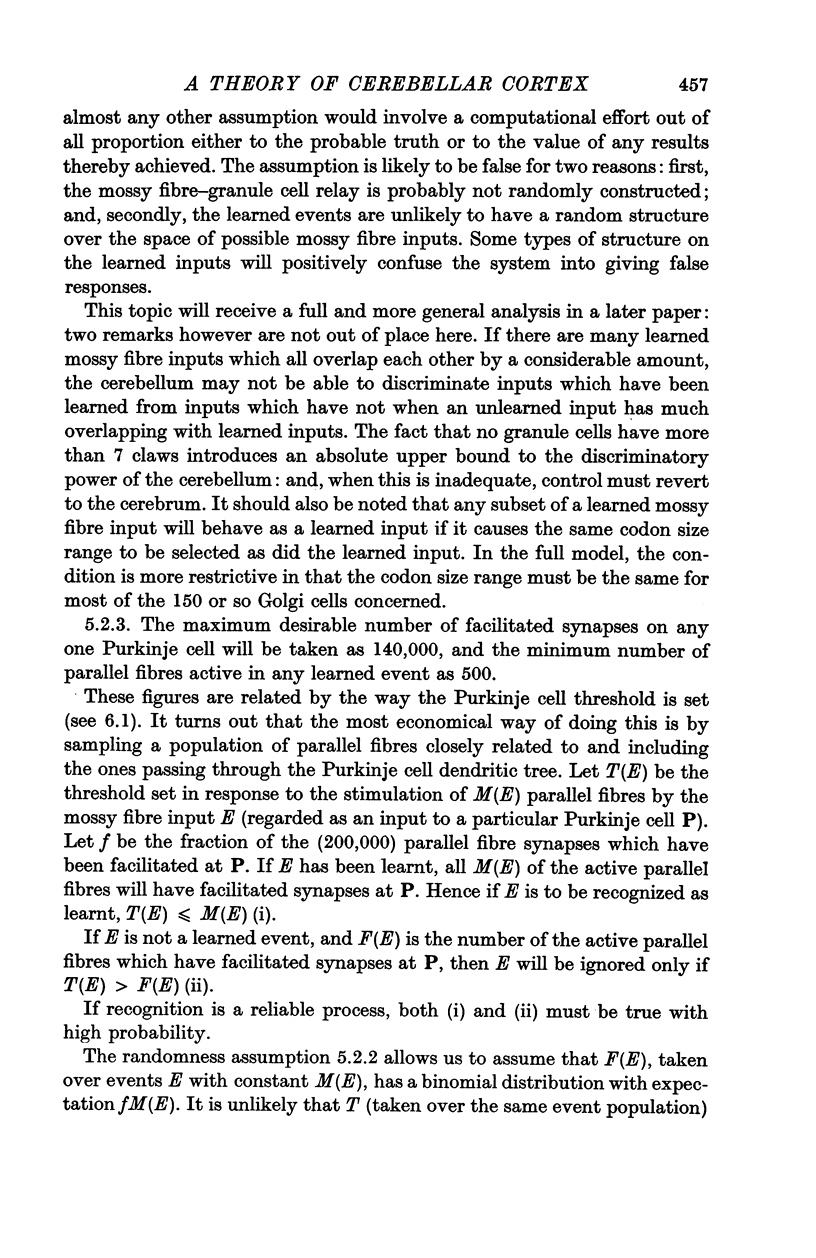
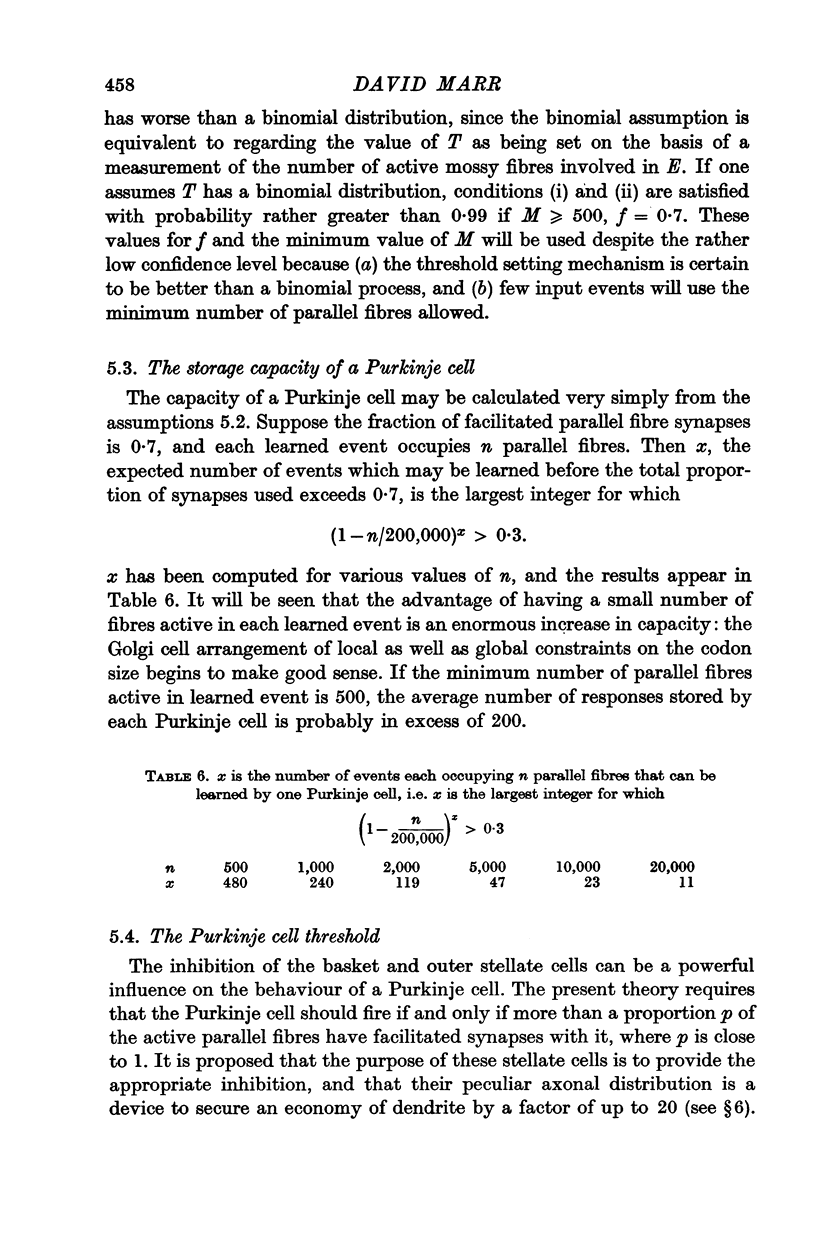
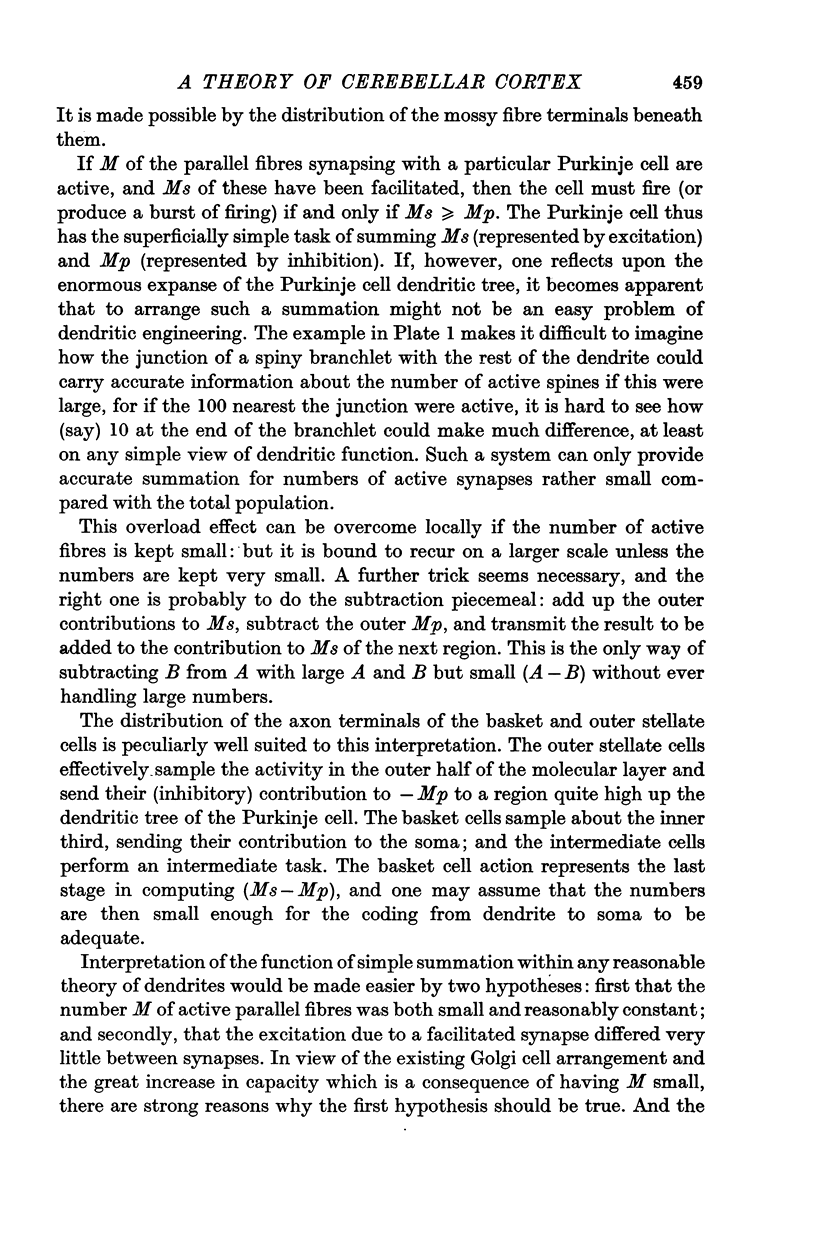
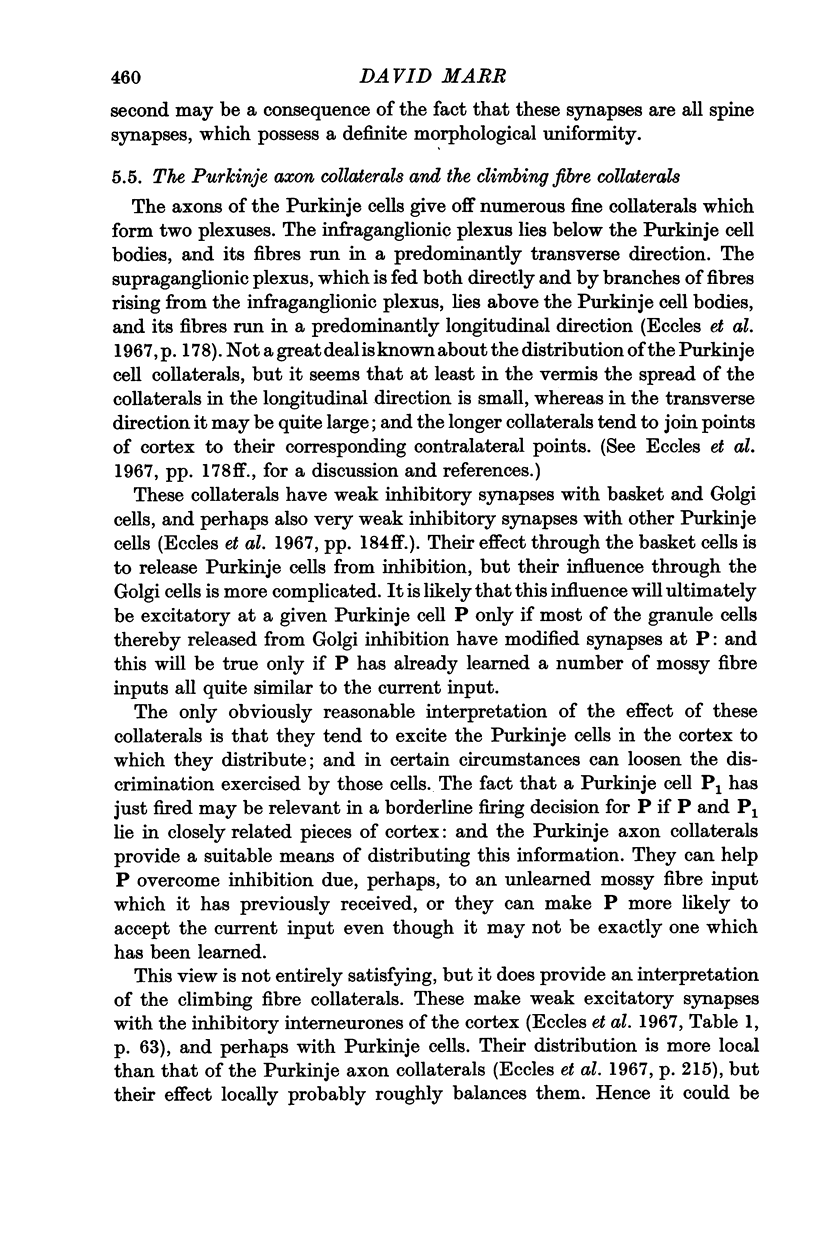

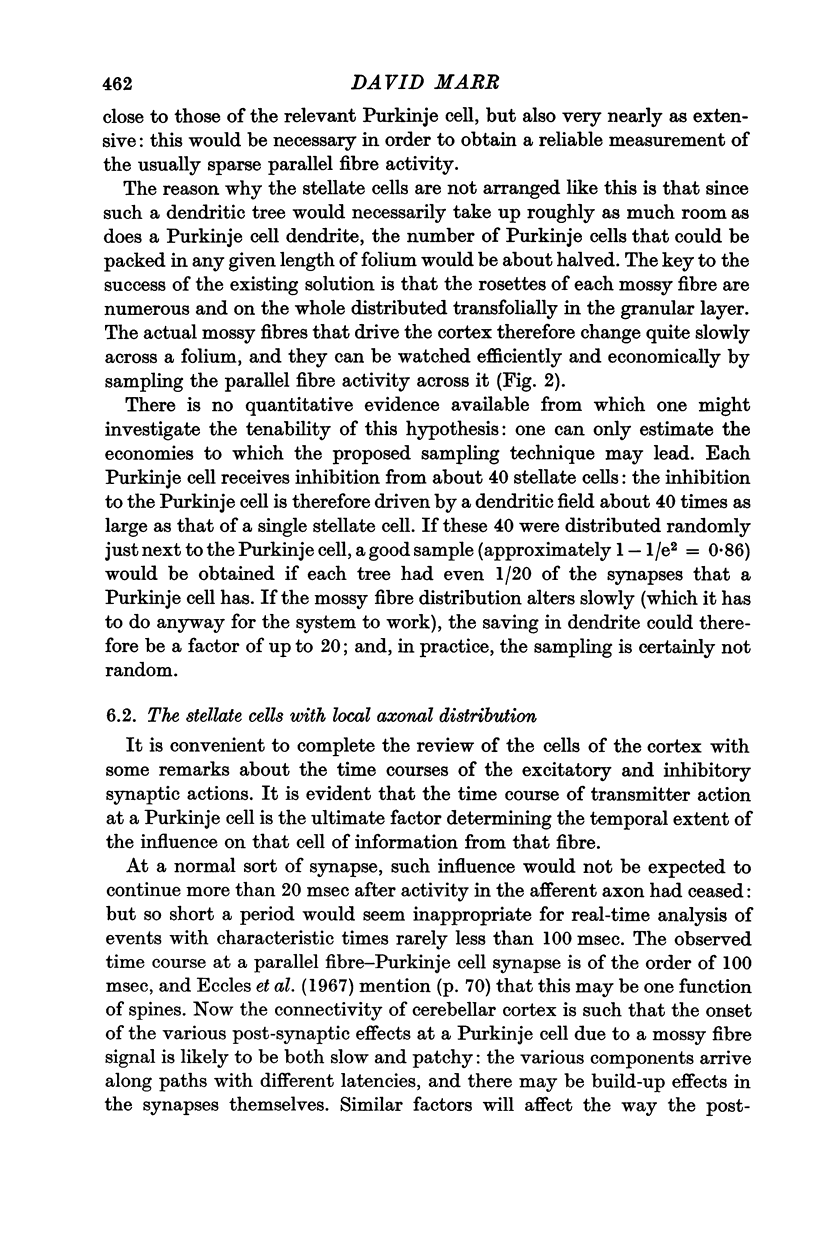
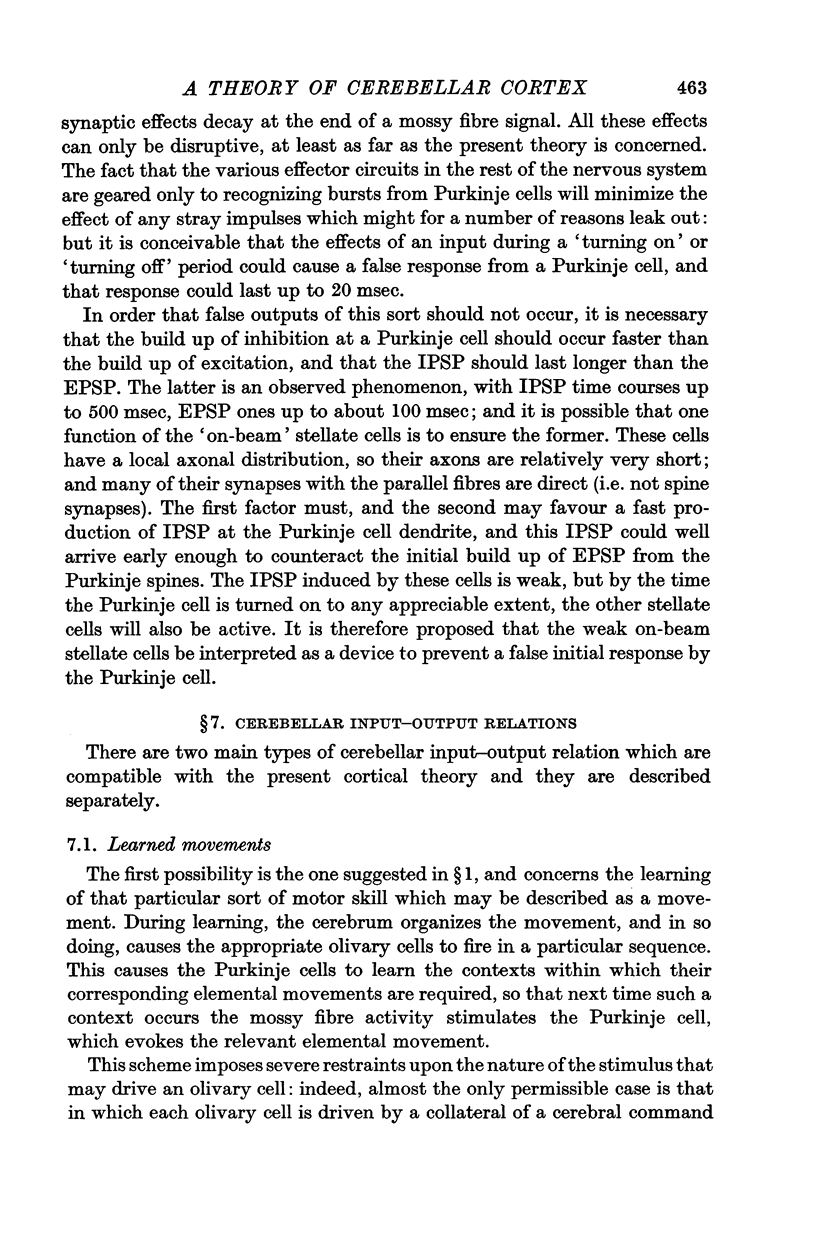
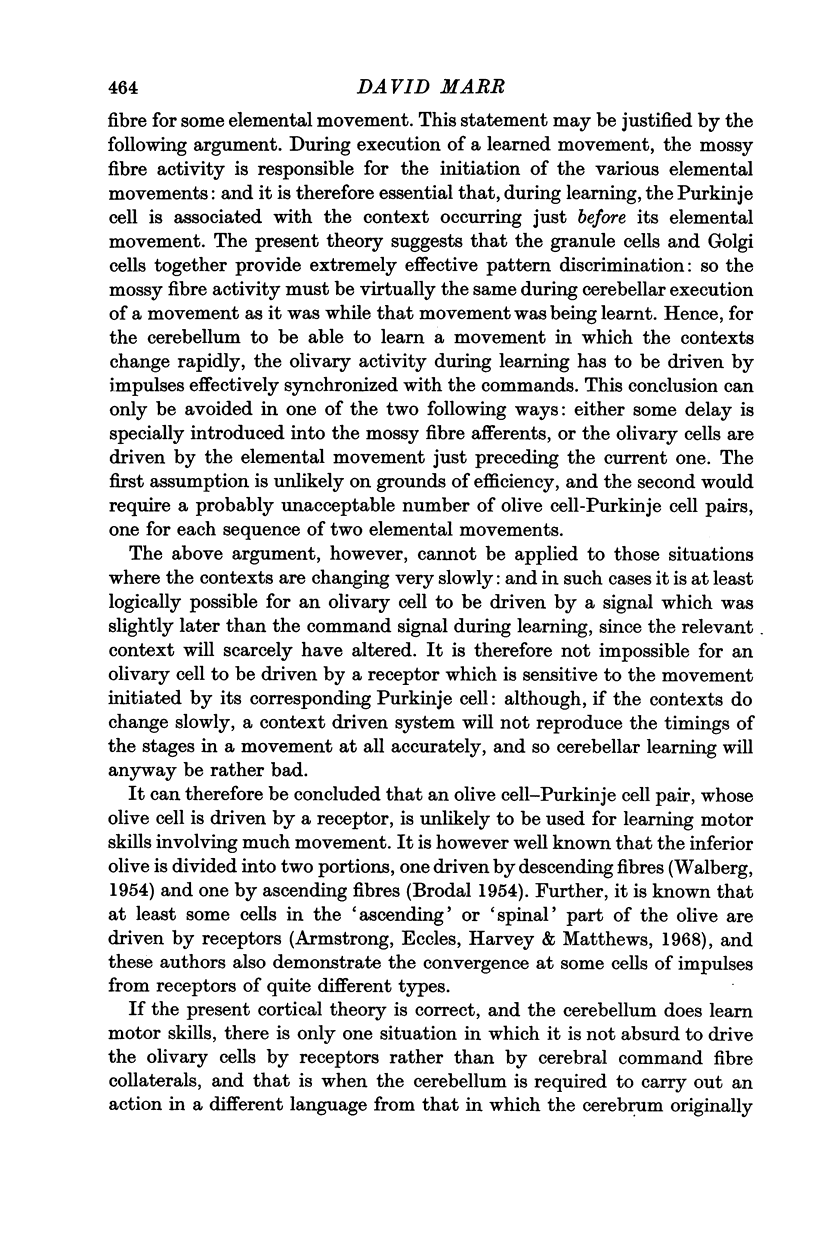
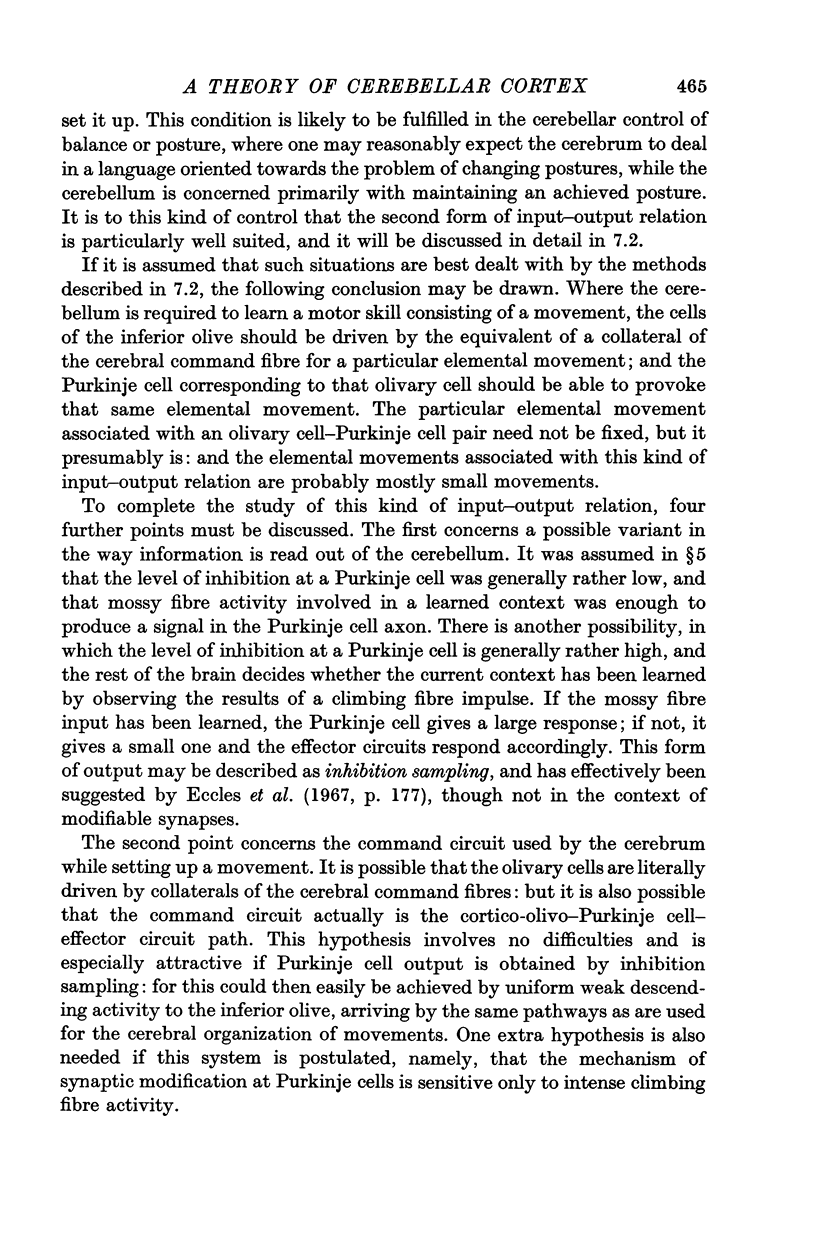
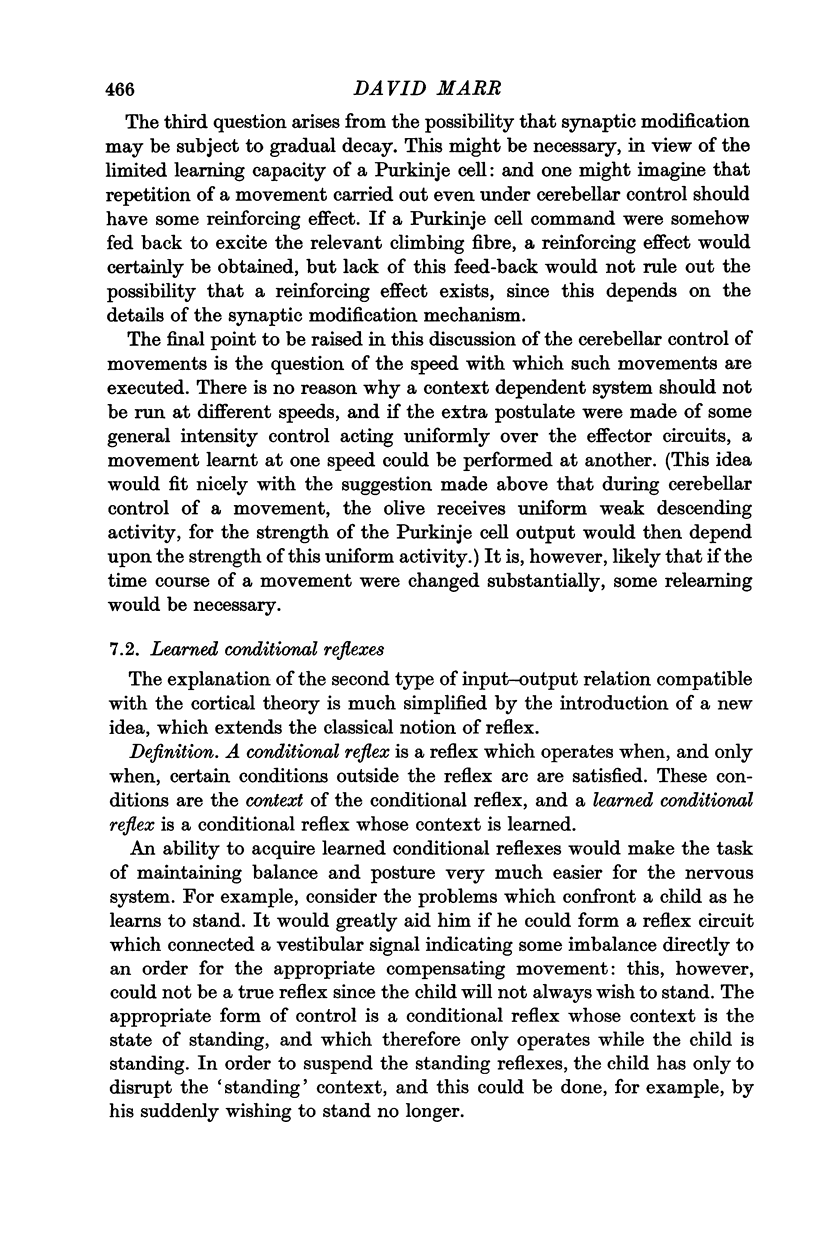
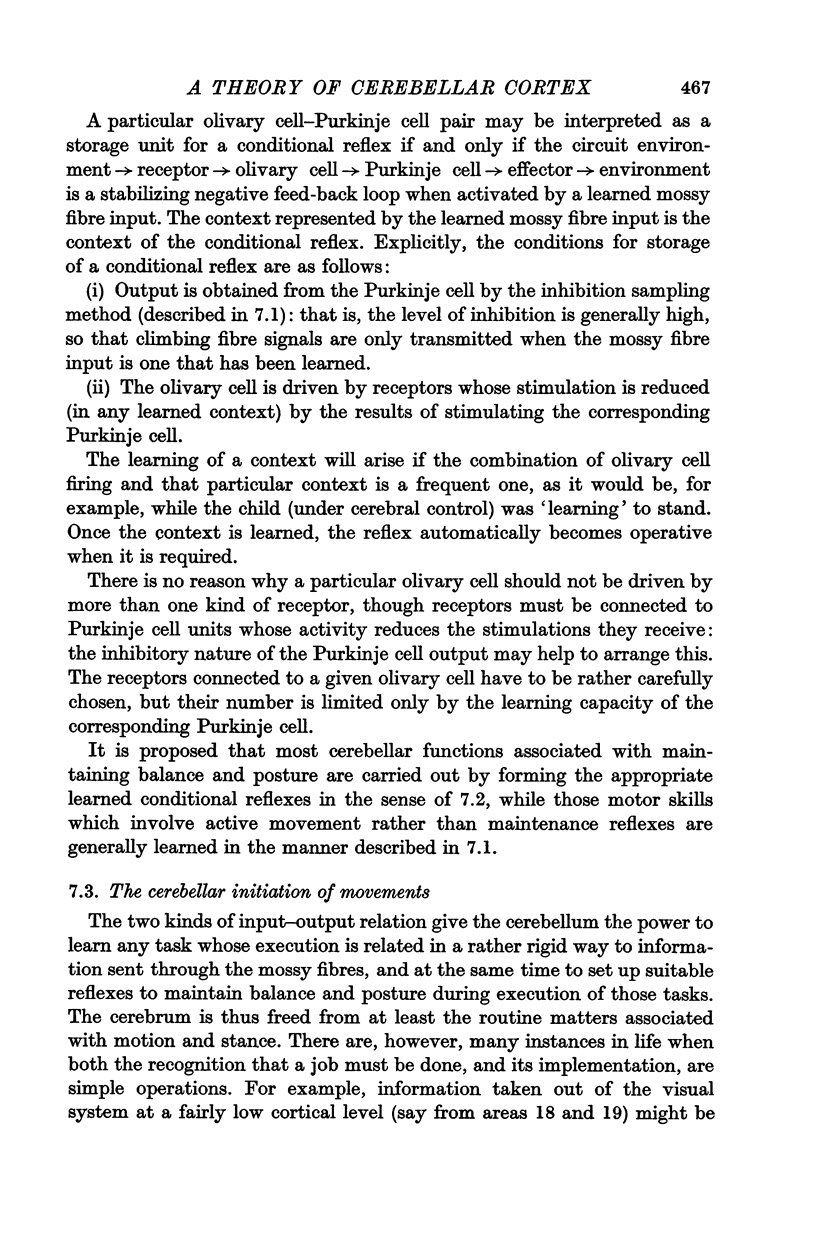
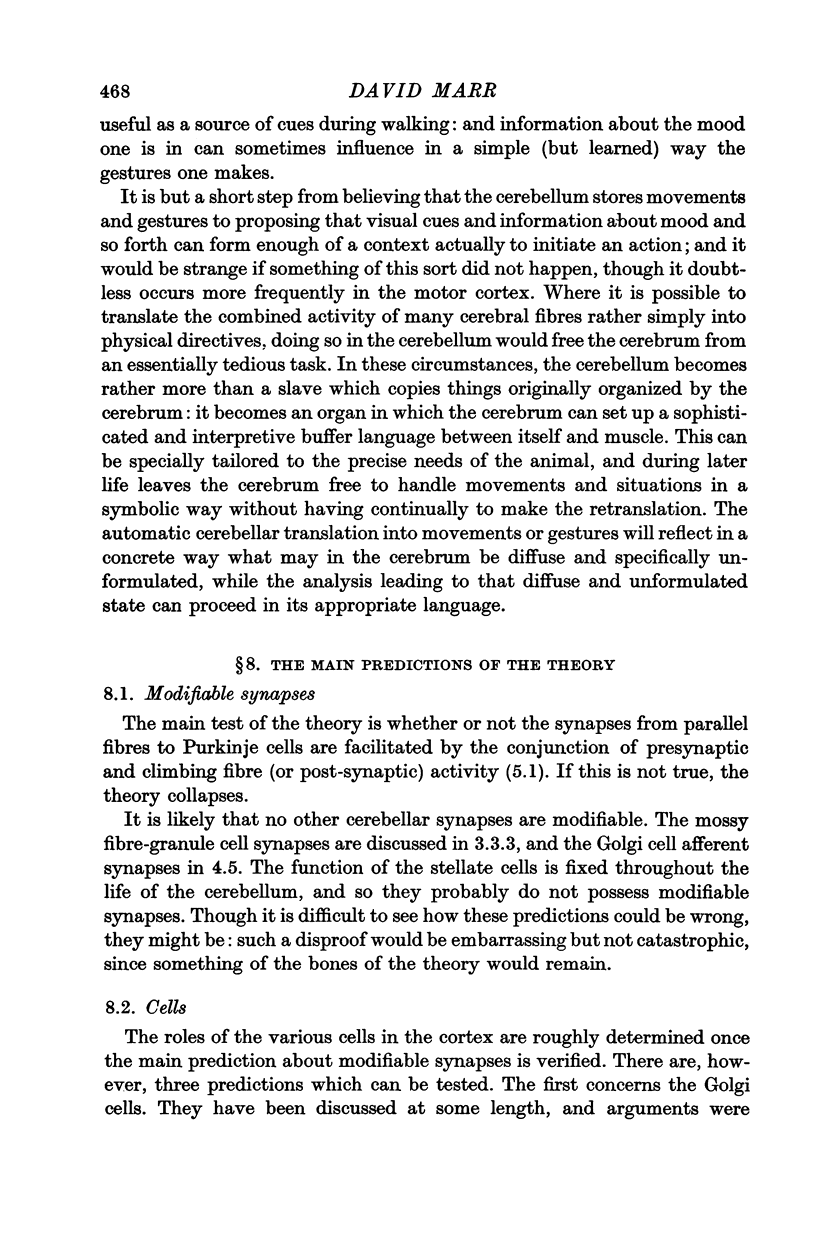
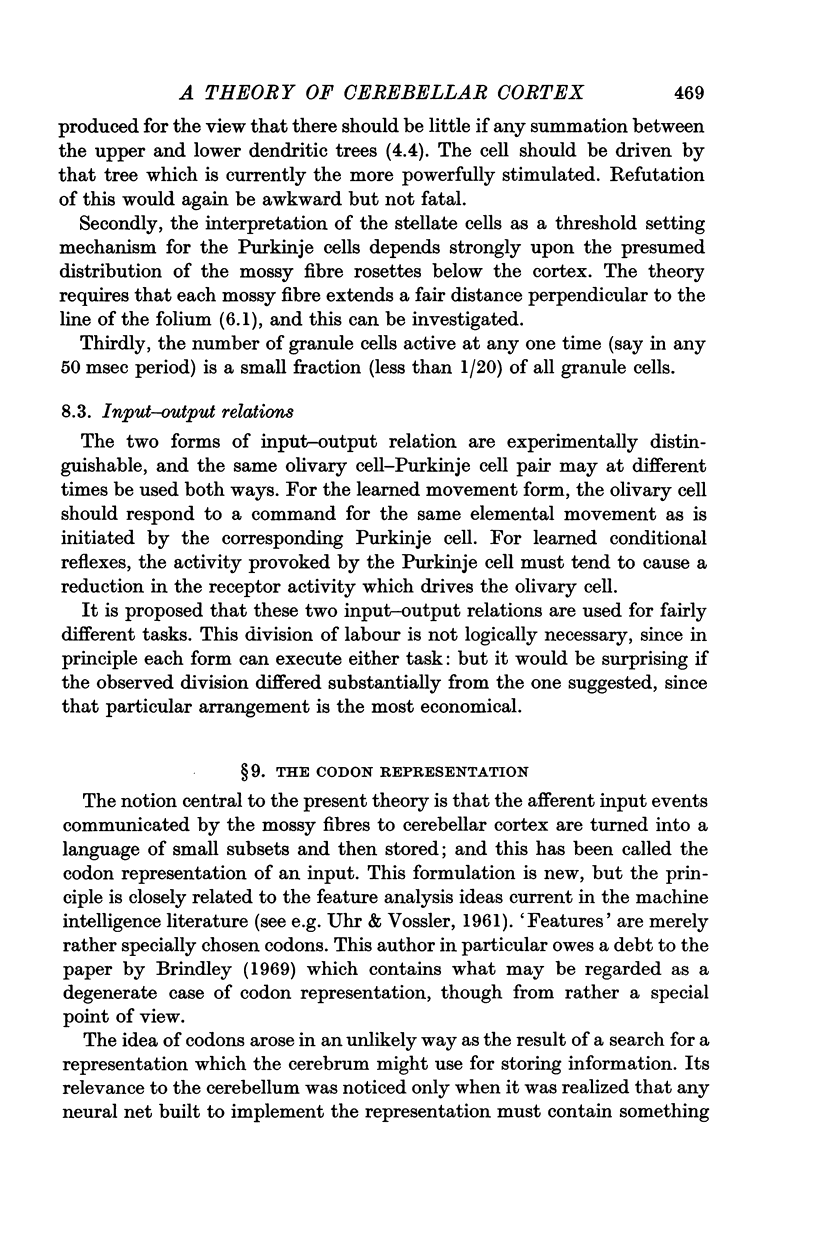
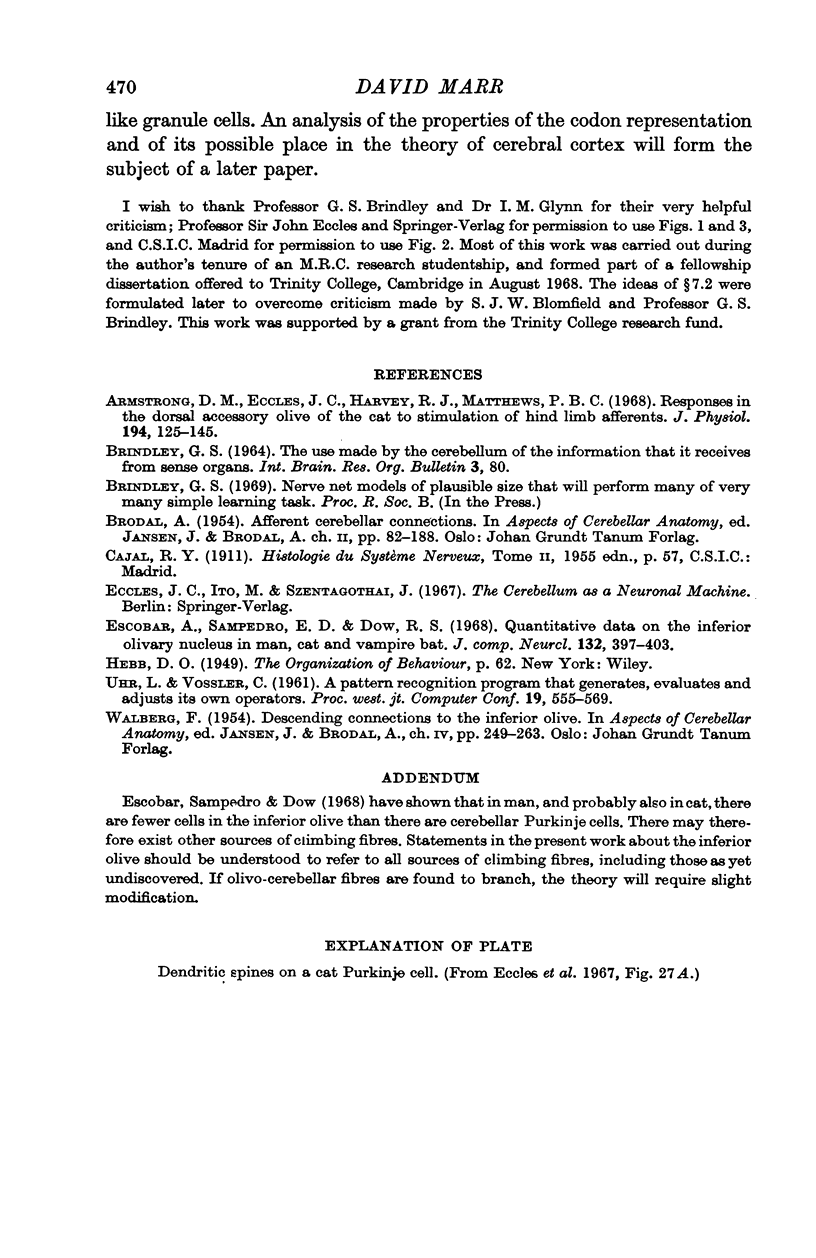
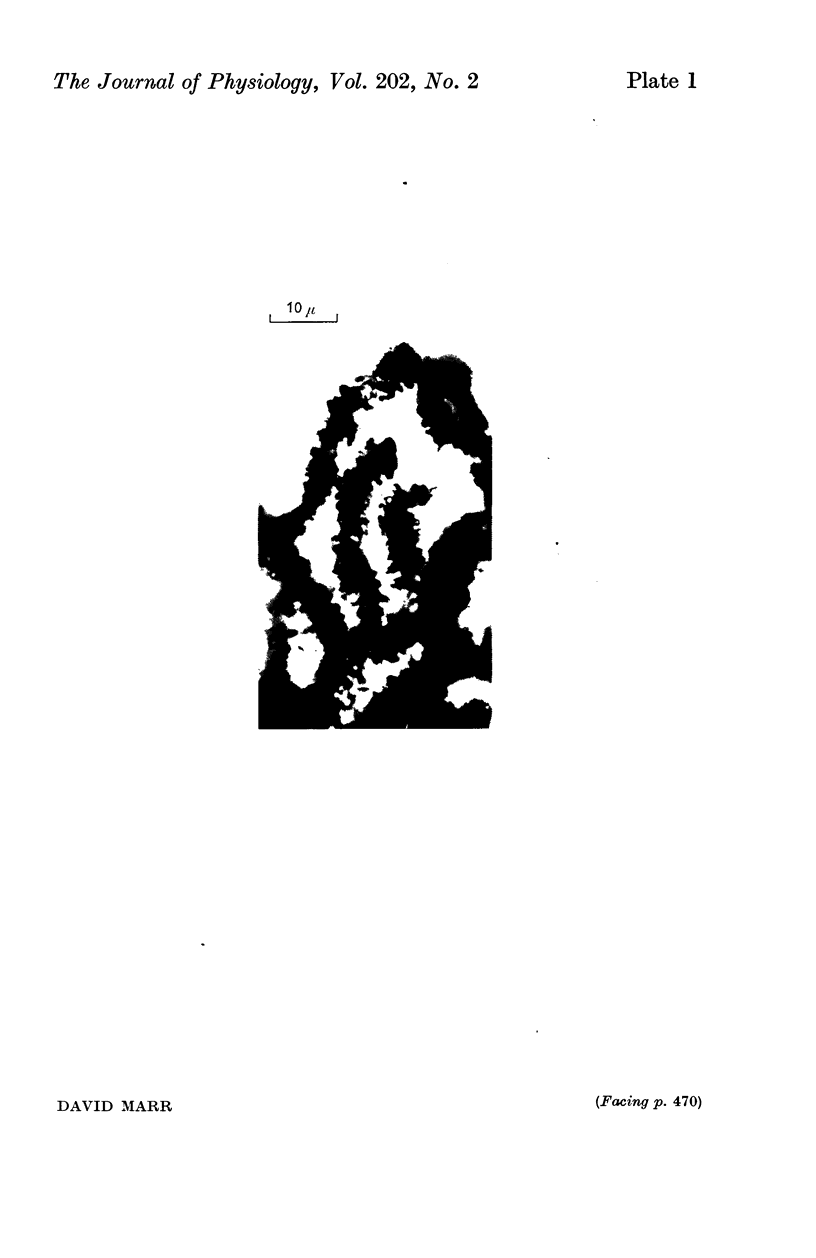
Images in this article
Selected References
These references are in PubMed. This may not be the complete list of references from this article.
- Armstrong D. M., Eccles J. C., Harvey R. J., Matthews P. B. Responses in the dorsal accessory olive of the cat to stimulation of hind limb afferents. J Physiol. 1968 Jan;194(1):125–145. doi: 10.1113/jphysiol.1968.sp008398. [DOI] [PMC free article] [PubMed] [Google Scholar]
- Escobar A., Sampedro E. D., Dow R. S. Quantitative data on the inferior olivary nucleus in man, cat and vampire bat. J Comp Neurol. 1968 Mar;132(3):397–403. doi: 10.1002/cne.901320303. [DOI] [PubMed] [Google Scholar]



